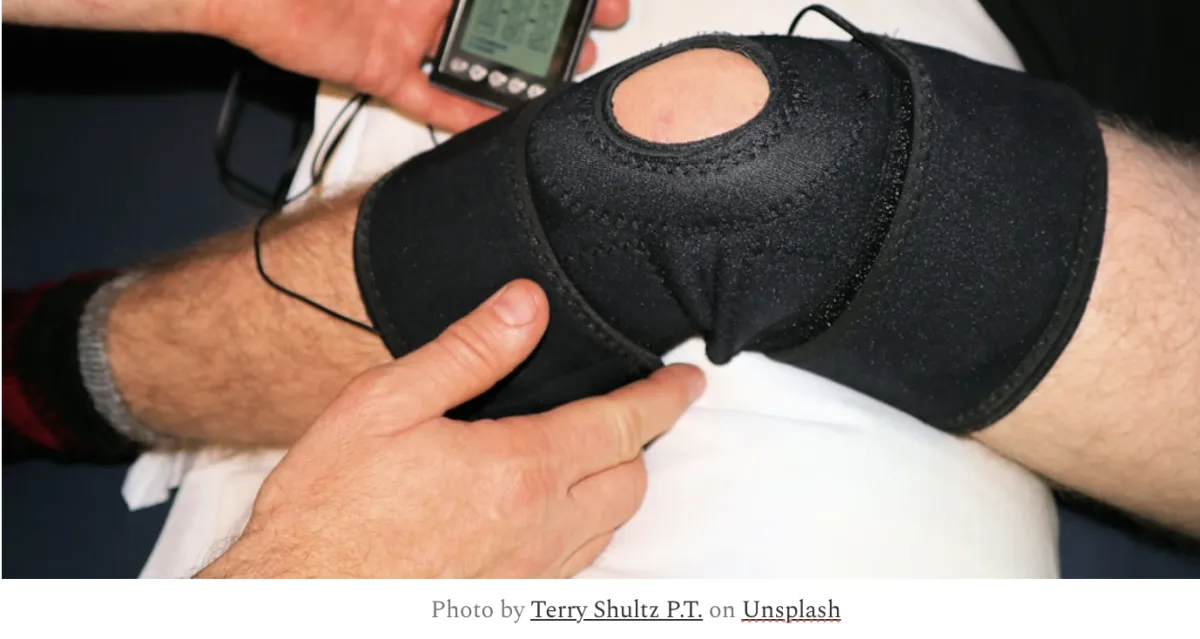ATHLETE BLOG LEOMINSTER

7 Root Causes That Will Cause Painful Knees
"I have bad knees."
Those of us who were alive during the Reagan presidency have had decades of activity, perhaps with a surgery or two along the way, that causes our chronic aches.
And at least temporarily, so do younger people going through growth spurts.
But for everyone else?
Having chronically painful knees should never be true.
Yet we hear this all the time from our youth athletes.
Not, "My knees have been sore lately", which would signal growth.
It's there for them all the time.
Which, because so many athletes over the years have joined our program to fix it, has made me extremely curious.
Why is chronic knee pain so common no matter your age?
Decades of research and experience has led me to believe that there's a variety of causes.
The source for one individual may be completely different for the next.
If you or someone you know has bad knees, I'd be willing to bet it stems from one or more of these seven issues.
#1 - Limited Ankle & Hip Mobility
Tight ankles don't bend enough to absorb their fair share of loading when sprinting, jumping, squatting, and more.
Which passes the burden onto the next joint up the chain, like a project partner who doesn't do their fair share at work or school.
Similarly, tightness in the hips creates rotation and wreaks havoc with proper knee movement.
The knee is a hinge joint, designed only to swing forward and back.
Poor hip mobility, like tight ankles, knocks that out of whack.
The iliacus, one of your hip flexor muscles, causes a wide range of health issues beyond just knee pain when it's immobile.
Back pain, hamstring pulls, foot pain, even shoulder issues can arise.
The most common way to ease the strain on your knees is to fix this.
#2 - Poor Single Leg Balance & Coordination
When the Micheli Center in Waltham first opened, they gave private tours to performance coaches they wanted to partner with.
I was lucky enough to be in that initial group.
They had this incredible treadmill that created imaging of how your feet were landing at various speeds.
Overlaid against optimal walking and running foot strikes, it showed how abnormal stresses may be coming from your stride.
It also showed variability, because even a few awkward landings can tweak a muscle or a joint.
It's those of us who can't balance well on one leg, or have poor coordination, that are most likely to have the occasional bad landing.
Meniscus tears and ligament strains often result.
#3 - Poor Hip & Hamstring Strength
The muscles above your knees act like puppet strings, controlling the movements of your legs.
This includes the hamstrings, hip and inner thigh muscles.
There's a delicate interplay between them, and when things go well there's smooth actions below.
When any of them aren't pulling the way they should, it creates unwanted movement at the knee joint
Side to side movement and hyperextension are two common examples.
As most workout warriors tend to favor training muscles they can see - chest, biceps, abs and quads - weakness often is found on the back side.
That means developing the hamstrings and glutes, the two most powerful puppet strings, can ease knee pain.
#4 - VMO Weakness
There is one other little string that also plays a significant role in knee stability,
It's the little tear drop muscle in your thigh.
Called the VMO, short for Vastus Medialis Oblique, it's main role is to prevent excessive inward knee movement.
Weakness in your VMO also makes you far more susceptible to dislocations, an injury that takes months to recover from and often ends promising careers.
Traditional training uses leg extensions, leg presses and squats to build this.
Respectfully, this approach doesn't make a ton of sense.
The VMO is better developed through single leg squatting and lunging, because those exercises force it to act in its stabilizing role.
The traditional approaches do not.
#5 - Core Muscle Weakness
Think of your upper body like a passenger on a roller coaster.
Without a safety bar or a seat belt to anchor you to the train, your momentum would send you flying off in the direction you were headed.
When you make a cut at fast speeds, the only thing preventing your upper body from flying off in the direction you were going is a stable core.
What does this have to do with your knees?
Since your upper body is firmly attached to your lower half, its momentum will simply pull you towards your plant foot.
Which is exactly how non-contact ACL tears happen.
Our Functional Movement Screen testing showed female athletes not passing the core stability tests at higher rates than males.
They also tear their ACL's at 7 times the rate of male athletes.
Perhaps there's a connection there.
#6 - Poor Technique When Jumping, Sprinting, and Changing Direction
Do your knees buckle inward or push too far forward when landing a jump?
Do you land heel first when sprinting?
Or put too much weight on your push off leg when cutting?
All of these technique flaws create minor irritations, often in your knees, each time you perform them incorrectly.
How many of these instances does the average kid accumulate during a three day tournament?
If your elbow is sore from banging it against the wall all day, the simple solution is to stop banging it against the wall.
Similarly, by removing the technique irritation that happens over and over, you take away the source of your pain.
#7 - Overuse
Most of the issues above create a slow burn of pain.
It comes on gradually, getting worse in small increments.
The pressure builds until you give it sufficient rest, and perhaps dedicate time to fixing the underlying issue.
Except when you're always in a competitive season, often 6 or 7 days a week, there never comes a time to release the pressure.
So the pain persists for weeks, months, or even years.
It lasts so long that you may find yourself saying, "I have bad knees."
Except that doesn't have to be true.
Because your problems are almost certainly fixable when you take the right approach.
Power Source Reviews
© Copyright 2025. Power Source. All rights reserved.
|
